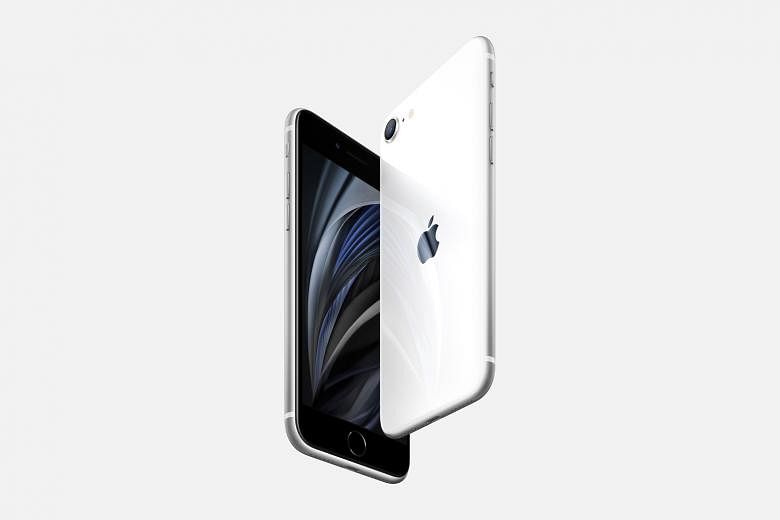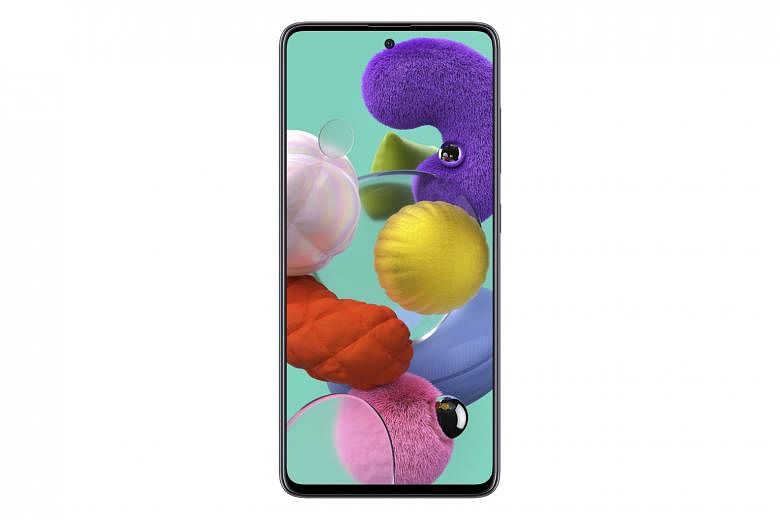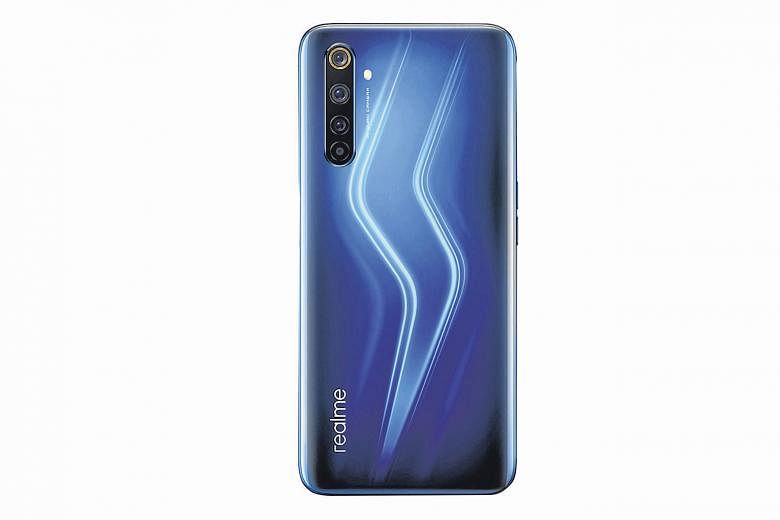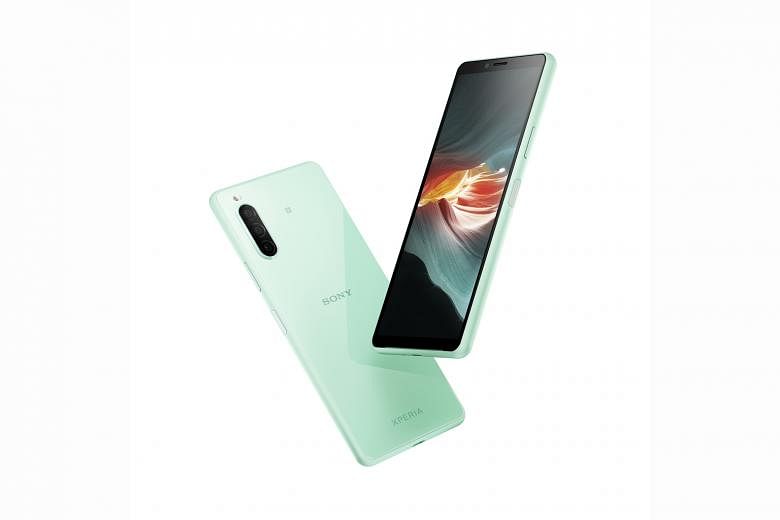It does not always make sense to buy the latest and greatest smartphones.
This is especially the case for Android phones, which are often discounted a few months after they are launched, unlike Apple's iPhones.
For instance, some of last year's high-end phones, such as the Samsung Galaxy S10e and the Huawei P30 (with the Google Play Store), have dipped into the upper mid-range price territory.
The S10e is now available at about $700 (down from $1,098), while the P30 is $608 (down from $998).
So how about getting such older flagships as an alternative to current mid-range phones?
There is a caveat - Android smartphone-makers usually offer only two years of software updates, which means that by next year, phones launched in 2019 will receive only security updates, and not new features.
Furthermore, despite declining prices, last year's top models are still more expensive than current mid-range phones.
For those looking for a reasonably priced phone, here are our picks.
Apple iPhone SE (2020)
From $649
The iPhone SE has been described as the perfect phone for the pandemic era.
Not only is it the cheapest iPhone available, but the SE also brings back the Touch ID fingerprint sensor, which is unhindered by mask-wearing, unlike the Face ID feature on higher-end iPhones.
While its camera and battery life are merely decent, the SE should last more than a few years as it has Apple's latest processor and features such as Wi-Fi 6 and wireless charging.
Apple also has an excellent track record for supporting older devices - the SE will likely receive at least four to five years of software updates.
Oppo Reno3
$499
Do you love to take selfies? Then the Oppo Reno3 may be just the mid-range phone for you.
It comes with a whopping 44-megapixel (MP) front selfie camera, with a night selfie mode for low-light conditions.
The Reno3's quad rear cameras are not too shabby either. They include a 48MP primary camera, a 13MP telephoto camera, an 8MP ultra-wide camera and a 2MP monochrome camera.
Redmi Note 9 Pro
$399
Are you constantly worried about your phone running out of juice before the end of the day?
The Redmi Note 9 Pro has you covered with a massive 5,020mAh battery that should easily last more than a day.
Also making a big impression is its sizeable 6.67-inch display, which is mostly all screen, except for the small hole-punch camera.
It is powered by a mid-tier Qualcomm Snapdragon 720G processor and features a quad-camera system anchored by a 64MP camera sensor from Samsung.
Samsung Galaxy A51
$448
The Samsung Galaxy A51 should need no introduction. After all, it was the best-selling Android smartphone globally in the first quarter of the year, according to market research firm Strategy Analytics.
The mid-range A51 even beat Samsung's flagship S20+, which was third on the list. But that is no surprise - the A51 comes with a large and bright 6.5-inch Oled screen, quad cameras and a decent-sized 4,000mAh battery.
Samsung's OneUI (based on Android 10) is also a sleek and polished user interface, with a bunch of fun camera modes and filters.
Realme 6 Pro
$499
The Realme 6 Pro brings one of the latest features in flagship smartphones - a high refresh rate display - to a mainstream price point.
-
FOR
• Smooth 90Hz display
• Clean and responsive user interface
• Snappy performance
AGAINST
• No HD support in Netflix
• Haptic feedback a bit too strong
• Battery life could be longer
SPECS
PRICE: $499
PROCESSOR: Qualcomm Snapdragon 720G (Dual-core 2.3GHz, six-core 1.8GHz)
MAIN DISPLAY: 6.6-inch IPS LCD, 2,400 x 1,080 pixels, 399 ppi pixel density
OPERATING SYSTEM: Realme UI (Android 10)
MEMORY: 128GB (microSD expandable up to 256GB), 8GB RAM
REAR CAMERAS: 64MP (f/1.8), 8MP ultra-wide (f/2.3, 119-degree), 12MP telephoto (f/2.5), 2MP macro (f/2.4)
FRONT CAMERAS: 16MP (f/2.0), 8MP ultra-wide (f/2.2, 105-degree)
BATTERY: 4,300mAh
RATING
FEATURES: 4.5/5
DESIGN: 4/5
PERFORMANCE: 4.5/5
VALUE FOR MONEY: 4.5/5
BATTERY LIFE: 3.5/5
OVERALL: 4/5
This $499 smartphone comes with a 90Hz display that runs as smoothly as the one on last year's Google Pixel 4.
But unlike the Pixel 4, which has a vibrant Oled screen, the Realme 6 Pro has a standard 1,080p LCD screen. This display is sufficiently bright that content on the screen is legible in the sun.
Netflix users will be disappointed, though, that the Realme 6 Pro lacks the L1 Widevine digital rights management certification for Full HD videos, which means they can watch videos only in standard definition (480p).
Except for being slightly thicker at the bottom, the bezel around the Realme 6 Pro is relatively narrow. At the top left of the screen is a cutout for the phone's dual front selfie camera unit, which includes a secondary ultra-wide camera that makes it easier to capture selfies with a large group.
The phone also has a side-mounted fingerprint sensor. A headphone jack is located at the bottom, next to the USB-C charging port and the single, downwardfiring speaker.
Its glass back is adorned with a lightning design that changes according to the angle at which light hits the glass. I find it tacky, but some folks may like it.
Sticking out slightly at the back is the phone's quad-camera system. Photos taken in good light conditions turned out decent, with good detail and acceptable noise, but looked a tad overexposed.
In near pitch-black conditions, the camera app's ultra dark mode, which takes several seconds to take a photo, kicks in automatically.
To my surprise, a picture of a fern taken in extremely low light came out looking lush and green.
The photo did not pass muster upon close examination though. It looked smeared with plenty of noise.
The Realme 6 Pro's user interface is close to stock Android. For instance, the default keyboard is Google's Gboard. The vibration from the phone's haptic feedback is a bit unruly and could be toned down slightly as well.
Realme did not overload the phone with third-party apps, but added system features such as the ability to run two instances of the same app and a dedicated gaming mode.
With its mid-tier Qualcomm Snapdragon 720G chip, the phone feels snappy. Mobile games like Call Of Duty run smoothly at High setting.
However, I was disappointed by its 91/2-hour battery life in The Straits Times video-loop battery test. This is about three hours shorter than the mid-range Realme XT smartphone I tested in November.
Sony Xperia 10 II
$569
There is a refreshing old-school vibe about the Sony Xperia 10 II.
-
FOR
• Handy and well-built
• Water and dust resistance
• Oled screen
• Excellent battery life
AGAINST
• Middling cameras
SPECS
PRICE: $569
PROCESSOR: Qualcomm Snapdragon 665 (Quad-core 2GHz, quad-core 1.8GHz)
MAIN DISPLAY: 6-inch Oled, 2,520 x 1,080 pixels, 457 ppi pixel density
OPERATING SYSTEM: Android 10
MEMORY: 128GB (microSD expandable up to 1TB), 4GB RAM
REAR CAMERAS: 12MP (f/2.0), 8MP ultra-wide (f/2.2, 120-degree), 8MP telephoto (f/2.4)
FRONT CAMERA: 8MP (f/2.0)
BATTERY: 3,600mAh
RATING
FEATURES: 4/5
DESIGN: 4.5/5
PERFORMANCE: 3.5/5
VALUE FOR MONEY: 3.5/5
BATTERY LIFE: 5/5
OVERALL: 4/5
While modern smartphones are reducing their screen bezel through the use of a notch or a cutout for the front camera, the Xperia embraces it.
Its 6-inch Oled screen is bookended by top and bottom bezels that are thick by current standards.
But there is a pleasing symmetry to these bezels that adds to the balanced feel of the Xperia when held in the hand.
At 151g, the phone is also light compared with its peers. It is handy too, thanks to a narrow plastic and glass body that suits those with smaller hands or those who prefer to use the phone one-handed.
Further enhancing its one-handed usability is the Xperia's Side sense feature, a short bar at the right side of the screen that, when double-tapped, opens up a menu with a handful of frequently used apps, common settings such as Bluetooth and Wi-Fi, and shortcuts to pull down the notification shade or switch to a dedicated one-handed mode.
Swiping up this Side sense bar brings up a multi-window feature that lets you choose two apps to run together side by side. Swiping down acts like the Back button of the Android interface.
The screen is flat and not curved at the sides, which means you are less likely to accidentally touch the screen with your palm while using the phone.
This 21:9 display is taller than usual. You can zoom in to fill up the entire screen - without any black bars at the sides - in supported video apps like Netflix and YouTube or games like Asphalt 9.
At its $569 price point, I was not expecting an Oled screen that looks bright and vibrant, with a sharp 1,080p resolution. Its narrow width, though, means that the text is a tad too small for my ageing eyes at the default font size.
The Xperia also has IP68 water resistance, which is unusual for a mid-range model.
However, I was unimpressed by its cameras, which top out at a modest 12MP for the primary rear camera and include ultra-wide and telephoto capabilities. There was a fair amount of noise in photos, especially those taken indoors in less than ideal lighting conditions.
Sony's camera app recognises scenes and makes adjustments to the settings, though some photos still turn out underexposed. A long-exposure Night mode does a decent job at managing highlights from light sources, but the resulting photos look soft and noisy.
The Xperia runs on stock Android 10 with minimal tweaks. While the interface is responsive, the phone's mid-range hardware, which includes a Qualcomm Snapdragon 665 processor and just 4GB of system memory, means it takes just a fraction longer to open apps than a flagship phone. To be fair, games like Asphalt 9 run smoothly enough.
Probably because of its relatively modest-sized display, the Xperia has excellent battery life. It lasted 16hr 10min in The Straits Times video-loop battery test, with screen brightness set to the maximum.







